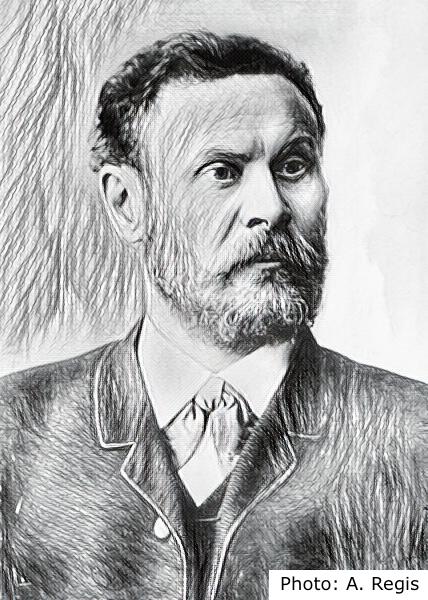Otto Lilienthal
Aviation pioneer Otto Lilienthal designed and built several novel, unpowered gliders with which he was able to demonstrate the concept of heavier-than-air flight. Subsequent to his series of well-publicized experiments, engineers were able to build on his findings and research methods on a course toward developing the world’s first manned aircraft.
Born in Anklam, Pomerania, Germany, on May 23, 1848, Lilienthal took great interest in the study of birds as a child and as a teenager. In 1870, he graduated from the Royal Technical Academy of Berlin, known today as Berlin University, with a degree in mechanical engineering. Upon graduation, he volunteered for military service during the Franco-Prussian War, which he completed in 1871.
While studying in Berlin, Lilienthal began his first experiments with human flight. With his brother Gustav, he built his first wood glider in 1867. This model was unsuccessful, but he continued to build winged vehicles and persevere in his study of the structure of bird wings and the aerodynamics of bird flight.
Lilienthal worked in Berlin as an engineer from 1871 to 1883 while he devoted personal time to aviation research. He and his brother became members of the Aeronautical Society of Great Britain in 1873, and Lilienthal gave his first public lecture about the theory of bird flight that same year. He continued to conduct experiments with artificial wings and the way that they responded to the force of air and wind. Meanwhile, he also began inventing and patenting devices in a variety of fields, including a mining machine and children’s building blocks. He would earn some 25 patents over the course of his career, four of which were aviation-related.
In 1883, Lilienthal opened a factory of his own in Berlin to make boilers and steam engines. There, he invented a safer small engine design based on a system of tubular boilers. This invention would help give him the financial means to be free to devote more time to aviation. He published a book on bird flight in 1889, entitled “Bird Flight as the Basis of Aviation,” which remains a classic in the field to this day. The book details various types and structures of bird wings as well as the aerodynamics of bird flight. It also presents Lilienthal’s ideas for applying his findings toward human flight. His scientific approach helped to lay the groundwork for further aviation study and for the establishment of the field in general. Many scientists and aviation enthusiasts from around the world visited and consulted with him throughout the last two decades of his life.
Lilienthal resumed building glider models in 1891. The Derwitzer Glider model he debuted that year employed willow rods and cotton fabric. He was able to glide 80 feet using this craft, which required him to shift his body weight in order to control its direction.
He built a more sophisticated craft in 1892 that allowed him to glide 270 feet, followed by a model with which he was able to glide 1,150 feet. He was awarded a patent for this “convertible flight apparatus” design. In 1893, he constructed a model that used flapping wings similar to how a bird would fly. Neither this model nor its successor was effective.
In 1894, Lilienthal created his most successful design, the Normal-Segelapparat, or "Standard Soaring Apparatus." He recreated the craft for individuals in countries around the world, including England, Ireland, Russia, France, Argentina, and the U.S.
Lilienthal took more than 2,000 glider flights by the time of his death in 1896 and had built eighteen models. He was killed in a gliding accident that took place on August 9, 1896. His last words, reportedly, were “Sacrifices must be made.”


